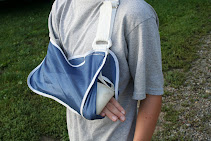In 2008, at least 5,091 people died in fatal motorcycle crashes – raising California’s motorcycle fatality statistics by as much as 91% from 2000 to 2008.
Los Angeles motorcycle accidents in particular, have also made a huge leap and there is as much as a 62% from 2004 to 2008 of motorcycle traffic collisions.
Following the loss of one of its own officers in a motorcycle accident, the Los Angeles Police Department has stepped up its motorcycle safety enforcement.
Additional officers will be dispatched two or three times a month in order to patrol areas which have a high rate of motorcycle accident. There will be increased patrols conducted by motorcycle officers in eight-hour stints.
Critical areas to be monitored include Topanga Canyon, Pacific Coast Highway, Crenshaw Boulevard and the San Fernando Valley.
However, officers will not just be citing motorcycle riders who commit traffic violations, other motorists will also be included in the patrol especially drivers who make unsafe lane changes and turns.
The motorcycle safety enforcement program will run until September 30, 2010 and is funded through a $100,000 grant from the California Office of Traffic Safety.
The proliferation of motorcycles on the roads these days is largely connected to the fact that they are more fuel-efficient and convenient than cars. But along with the upsurge of motorcycles running rampant are also the ballooning statistics of motorcycle accident injuries and deaths.
The majority of motorcycle accidents deaths involve a multiple vehicle collision. As many 2,767 people died in motorcycle traffic collisions and it makes up 54% of fatalities.
LAPD’s efforts to increase patrol will be a crucial element in helping to bring down the body count in motorcycle accidents.
Aside from unsafe lane changing, turning, reckless driving, speeding, and DUI, officers will also be able to implement California’s helmet laws more stringently which in turn would greatly reduce the number of motorcycle deaths by as much as 37 percent and brain injuries by as much as 67 percent.
Los Angeles motorcycle accidents in particular, have also made a huge leap and there is as much as a 62% from 2004 to 2008 of motorcycle traffic collisions.
Following the loss of one of its own officers in a motorcycle accident, the Los Angeles Police Department has stepped up its motorcycle safety enforcement.
Additional officers will be dispatched two or three times a month in order to patrol areas which have a high rate of motorcycle accident. There will be increased patrols conducted by motorcycle officers in eight-hour stints.
Critical areas to be monitored include Topanga Canyon, Pacific Coast Highway, Crenshaw Boulevard and the San Fernando Valley.
However, officers will not just be citing motorcycle riders who commit traffic violations, other motorists will also be included in the patrol especially drivers who make unsafe lane changes and turns.
The motorcycle safety enforcement program will run until September 30, 2010 and is funded through a $100,000 grant from the California Office of Traffic Safety.
The proliferation of motorcycles on the roads these days is largely connected to the fact that they are more fuel-efficient and convenient than cars. But along with the upsurge of motorcycles running rampant are also the ballooning statistics of motorcycle accident injuries and deaths.
The majority of motorcycle accidents deaths involve a multiple vehicle collision. As many 2,767 people died in motorcycle traffic collisions and it makes up 54% of fatalities.
LAPD’s efforts to increase patrol will be a crucial element in helping to bring down the body count in motorcycle accidents.
Aside from unsafe lane changing, turning, reckless driving, speeding, and DUI, officers will also be able to implement California’s helmet laws more stringently which in turn would greatly reduce the number of motorcycle deaths by as much as 37 percent and brain injuries by as much as 67 percent.






